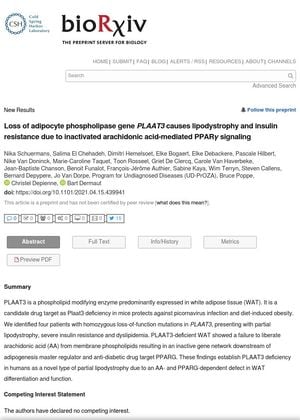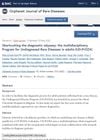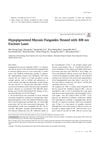Loss of Adipocyte Phospholipase Gene PLAAT3 Causes Lipodystrophy and Insulin Resistance Due to Inactivated Arachidonic Acid-Mediated PPARγ Signaling
April 2021

TLDR Not having the gene PLAAT3 leads to fat loss, high insulin resistance, and abnormal fat levels in the blood due to a disruption in fat cell development and function.
The study identifies PLAAT3, a phospholipid modifying enzyme predominantly found in white adipose tissue (WAT), as a potential drug target. Four patients with homozygous loss-of-function mutations in PLAAT3 were found to present with partial lipodystrophy, severe insulin resistance, and dyslipidemia. The deficiency of PLAAT3 in WAT resulted in a failure to liberate arachidonic acid (AA) from membrane phospholipids, leading to an inactive gene network downstream of adipogenesis master regulator and anti-diabetic drug target PPARG. This establishes PLAAT3 deficiency in humans as a new type of partial lipodystrophy due to an AA- and PPARG-dependent defect in WAT differentiation and function.


